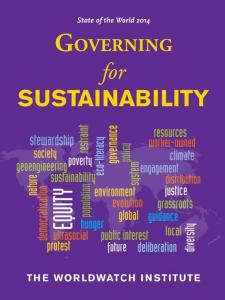Back to OLLI climate change homepage
OLLI – week 7 October 28th, 2014
Future Promise Part B:
-
Biochar
-
Adaptation issues: sustainability
-
NIMBY
My email contact is (copy/paste) pebelanger@glassdesignresources.com
- Original syllabus for Tuesday, October 28th, 9:30-11:30 a.m.:
- It’s not about climate change as much as sustainability
- Energy
- Urban heat islands
- Food security
- Population growth; potential refugee issue of climate change
Revised and Expanded syllabus:
- word document: Belanger – Earth climate past present future – week 7 syllabus
- PDF document: Belanger – Earth climate past present future – week 7 syllabus
BIOCHAR, promise for the future? – 2012 VIDEO
This video was professionally/created/edited from a 2012 Biochar conference and was shown at a CRES-Jeffco (http://cres-energy.org/chapters/cres-jeffco-chapter/ meeting 6/26/2014 where I first became aware of it (June 26, 7:00 pm JUC: Mike Rocke, Mike Chieke, Ron Larson: Biochar: A simple tool to fight global warming).
NOTE: You will have to slide the bar to get it to start at the points indicated below:
- Morgan Williams, CEO Biochar solutions (not shown in class)
0 to 3:57
Morgan Williams – president/ceo Biochar solutions
1 km trees = 1 million tons CO2
Human output 8 gigatons carbon = 32 gigatons CO2 or 32,000 times those trees
Efficiency doesn’t remove carbon
Carbon negativity – $25million prize for gigaton sequestering 3200 piles of wood
- Air capture
- Biochar 3 companies
- Beccs – biomass powerplant and CCS
- Enhanced wx
- Land mgt – Savory institute
- and at 3:57 – David Laird, Iowa state u/dept Agronomy (not shown in class)
Geologist background, soil and earth science background
Oil coal and natural gas 7million workers and 1.9 trillion dollars in govt subsidies
6:00 CCS a drag on economy – not generating economic value.
Soil and water quality improvement
Increased yield;increased value of land for 100s of years
Horticultural, reclamation – soil-water-holding capacity.
and at 8:55 Cool Planet presentation starts; features Cool Planet founder Mike Cheiky. I admit he overstates some of the claims of Global warming; try to overlook that and listen to the rest about biochar.
Future Adaptation issues: sustainability
Other class coverage: related to AR5/WGII:
§ II: IPCC CLIMATE CHANGE REPORT/Working Group II (WGII): Impacts, Adaptation and Vulnerability – volume 2, April 2014; especially see:
- Summary for Policymakers (SPM)
- Video
- Graphics — choose chapter and then right-click
If I’m not able to cover all listed, please google and search out these topics
- Human health and the built environment (6.1) MOOC 6.1 video
https://www.futurelearn.com/courses/climate-change-challenges-and-solutions/steps/2630/progress
Climate change has the potential to change the way we live. How will climate change affect human activity in our built environment? Dr. Tristan Kershaw looks at how climate change can impact on our familiar urban landscapes. How might the severity of urban heat islands increase to constitute a significant threat to human health during heat wave events?
- Urban Heat Islands (6.2):
This web page provides an excellent summary of urban heat islands. How do you think the land use planning in urban heat islands could be used to reduce the scale of such islands? http://earthobservatory.nasa.gov/IOTD/view.php?id=36227
- Video activity (6.3): Climate change and food security
https://www.futurelearn.com/courses/climate-change-challenges-and-solutions/steps/3307/progress
This activity is designed to help you recognize the human impact of climate change on the security of the global food supply. Professor Sarah Gurr introduces a surprising twist to potential impacts of climate change. Is the biggest potential threat to humanity a tiny fungus?
- The global food security program (6.4)
The Global Food Security program is a multi-agency program bringing together the interests of the research councils, executive agencies and government departments. Its website is an excellent resource for gaining a broad understanding of this issue.
http://www.foodsecurity.ac.uk/index.html
- Tackling food security – thoughts to ponder (6.5)
With a growing population and improving diets there is a need to double our food supply by 2050. Identify three measures you would take meet this demand. Identify one of your measures from your list and post your solution into the discussion – be prepared to defend your choice!
SUSTAINABILITY / LINKS:
 reference: Planetary Boundaries: Exploring the Safe Operating Space for Humanity by Johan Rockström 1,2, Will Steffen 1,3 et al. (tables and reference links at bottom of article)
reference: Planetary Boundaries: Exploring the Safe Operating Space for Humanity by Johan Rockström 1,2, Will Steffen 1,3 et al. (tables and reference links at bottom of article)
reference: Climate Change and Violent Conflict Science-2012-Scheffran-869-7
 2014
2014  2013
2013
reference: http://www.worldwatch.org/bookstore/state-of-the-world and http://www.worldwatch.org/bookstore/publication/state-world-2014-governing-sustainability
NIMBY:
VIDEO ON NIMBY: by Dr. Patrick Devine-Wright showed in class: no public videos but several articles by him – google him and see what you find. The little I found:
- Beyond NIMBYism: towards an integrated framework for understanding public perceptions of wind energy http://onlinelibrary.wiley.com/doi/10.1002/we.124/abstract
- Rethinking NIMBYism: The role of place attachment and place identity in explaining place-protective action: http://onlinelibrary.wiley.com/doi/10.1002/casp.1004/abstract
REFERENCES / LINKS:
-
http://www.worldwatch.org/
-
Biochar video notes times/links: go to my Biochar page – click here:
- Concerns about the effect of Renewable costs on Germany’s economy: Germany’s Expensive Gamble
NEW MOOC CLIMATE COURSE – 5 weeks:
-
New MOOC course that starts November 10th, 2014 for 5 weeks: https://www.futurelearn.com/courses/our-changing-climate; Different length and University. Same middlemen as the MOOC course I took from University of Exeter in February 2014 whose syllabus was a model and some of whose videos I showed in class.
-
Other MOOC courses OF ALL KINDS OF TOPICS – go here: https://www.futurelearn.com/courses/categories
